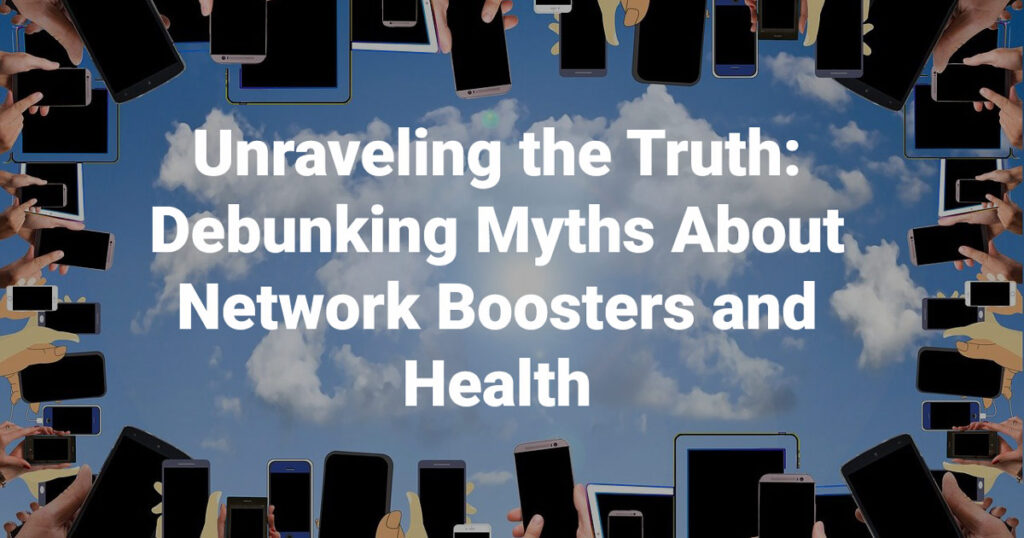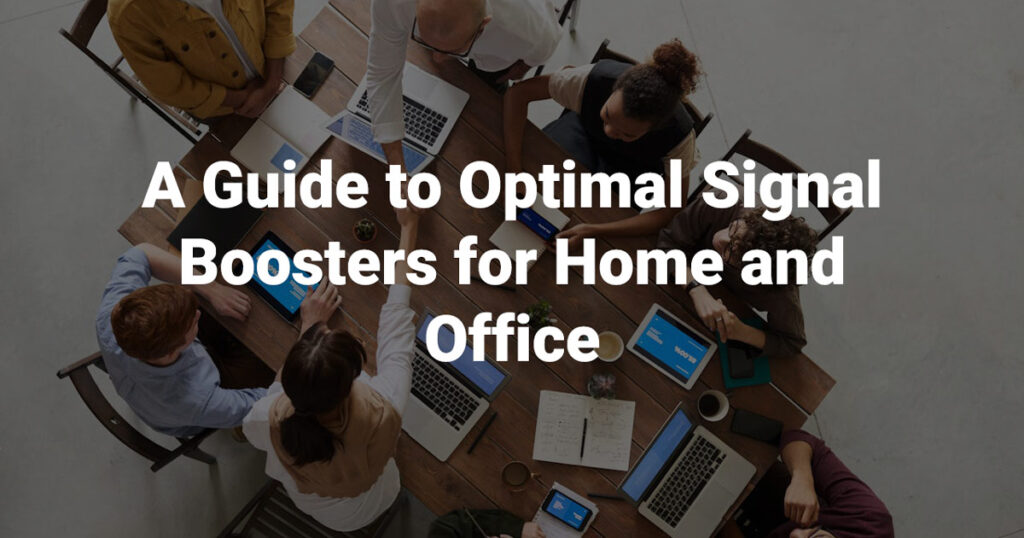In an increasingly connected world, strong mobile signal strength is essential. Yet, despite advanced technology, mobile signals remain vulnerable to various environmental factors. From weather conditions to structural barriers, a range of external influences can lead to poor connectivity, resulting in dropped calls, slow data speeds, and overall frustration for users. Fortunately, mobile signal boosters offer a powerful solution by countering these environmental challenges, helping you stay connected when it matters most.
This article delves into the environmental factors that affect mobile signal strength, exploring how mobile signal boosters work to improve connectivity.
1. Weather Conditions
Weather is a major factor in mobile signal quality. Certain weather conditions can disrupt the transmission of radio waves, which carry mobile signals.
- Rain: Heavy rainfall absorbs radio waves, especially those in higher frequencies like 4G and 5G. As water droplets create interference, signals weaken, leading to slower data speeds and call disruptions.
- Snow: Snowflakes, like rain, absorb and scatter radio waves. Accumulated snow on rooftops or trees can also obstruct signal paths, weakening your connection.
- Fog: Fog contains tiny water particles, which cause interference and lead to slower speeds or call drops.
- Wind: Strong winds can damage cell towers or their components, weakening signals.
How Boosters Help: Signal boosters capture even weak signals outside your building or vehicle and amplify them, minimizing the impact of weather. While boosters can’t fully overcome extreme weather conditions, they significantly improve your signal in milder weather disruptions, ensuring more stable connectivity.
2. Natural Obstacles
Natural barriers like mountains, hills, and forests obstruct signal transmission.
- Mountains and Hills: Mountainous regions experience weaker signals due to the obstruction of cell tower signals. Mountains either absorb or deflect these signals, making it difficult for them to reach remote areas.
- Forests: Trees absorb radio waves, especially those in the higher frequency bands. Areas with dense vegetation are prone to weak signals as the leaves and branches scatter and weaken the waves.
How Boosters Help: Mobile signal boosters can amplify whatever weak signals are present, making it possible to achieve a more stable connection even in areas surrounded by trees or hills. However, it’s crucial to place the booster’s external antenna at a high elevation to get the best possible reception.
3. Building Materials
The materials used in building construction can block mobile signals significantly, which is why many users experience weak connectivity indoors.
- Concrete and Brick: Concrete walls are dense, effectively blocking and absorbing radio waves. Brick walls also reduce signal strength, making basements or rooms with thick walls prone to poor reception.
- Metal and Glass: Metal roofing, windows with reflective coatings, and metal siding act as barriers to mobile signals. Metal reflects signals away, making indoor connectivity challenging.
- Insulation Materials: Certain types of insulation, such as spray-foam insulation, contain metal components that obstruct mobile signals.
How Boosters Help: Boosters improve indoor signal strength by capturing and amplifying the weak signals from outside. By placing the external antenna in an optimal location, even concrete and metal barriers can be overcome, allowing for consistent and stronger signals within the building.
4. Urban Interference
Urban environments pose unique challenges to mobile signals due to the high density of buildings, electronic devices, and competing networks.
- Tall Buildings: Skyscrapers and densely packed buildings in urban areas create multiple barriers and deflect signals. As mobile signals travel in straight lines, they often get interrupted by tall structures.
- Electronic Interference: In highly populated areas, many electronic devices, from Wi-Fi routers to Bluetooth devices, emit signals that interfere with mobile networks. This can lead to slower connections, dropped calls, or reduced internet speeds.
- Network Congestion: Cities with high population density experience network congestion. Too many devices connected to a single cell tower can reduce signal quality, especially during peak hours.
How Boosters Help: Mobile signal boosters provide a stable solution to urban interference by strengthening weak signals within buildings, helping users bypass external interruptions and network congestion. Additionally, boosters can create a dedicated indoor network, reducing reliance on overcrowded towers in busy areas.
5. Distance from Cell Towers
The farther a device is from a cell tower, the weaker the signal will be, as radio waves lose strength over distance.
- Rural Areas: Rural areas typically have fewer cell towers, making it challenging to get a strong connection.
- Remote Locations: Some places are far from cell towers due to challenging terrains or economic constraints, leading to limited connectivity options.
How Boosters Help: Signal boosters capture the faint signals available in remote or rural areas and amplify them, bringing reliable connectivity to regions with fewer towers. Placing the external antenna in an open, elevated area improves the booster’s ability to capture the best possible signal for amplification.
6. Reflection and Refraction of Signals
Radio waves can reflect, refract, or scatter when they encounter various surfaces, leading to signal degradation.
- Reflection: Signals reflect off surfaces like water, glass, or metal, altering their path and weakening their strength by the time they reach the receiver.
- Refraction: Radio waves may bend as they pass through certain materials, leading to signal degradation.
- Diffraction: When signals encounter an obstacle with sharp edges, they bend around it, which can lead to signal distortion and loss.
How Boosters Help: Signal boosters minimize the effects of reflection, refraction, and diffraction by amplifying whatever signal strength is available, providing a more reliable connection even in areas where radio waves are prone to interference.
How Do Signal Boosters Work?
A mobile signal booster consists of three main components:
- External Antenna: This antenna, usually installed outdoors or on a building’s roof, captures the available weak mobile signal from nearby cell towers.
- Amplifier: The amplifier strengthens the captured signal, making it powerful enough to improve connectivity.
- Internal Antenna: The internal antenna broadcasts the boosted signal indoors, ensuring that mobile devices receive stronger connectivity in areas that were previously weak.
Signal boosters work with 2G, 3G, 4G LTE, and even some 5G networks, making them versatile solutions for various network standards.
Choosing the Right Signal Booster for Your Needs
When selecting a signal booster, consider the following factors:
- Coverage Area: Determine the size of the area you need to cover, whether it’s a single room, a house, or an office.
- Carrier Compatibility: Choose a booster compatible with your carrier’s frequency bands. Most boosters support multiple carriers but verifying compatibility is essential.
- External Signal Strength: If the outside signal is exceptionally weak, a more powerful booster may be necessary to achieve desired results.
- Installation: Installation requires finding the optimal position for the external antenna to capture the strongest available signal. Professional installation may be beneficial in complex environments.
Conclusion
Environmental factors can significantly impact mobile signal quality, creating a need for solutions that maintain connectivity. Weather conditions, natural obstacles, building materials, urban interference, distance from cell towers, and signal refraction all play a role in diminishing mobile signal strength.
Mobile signal boosters present a practical, efficient solution to these challenges. By amplifying weak signals, boosters counteract environmental interference and ensure better call quality, faster data speeds, and overall reliable connectivity. Whether in a densely populated urban area or a remote rural location, a signal booster can make all the difference, helping you stay connected to what matters most.



